Yesterday, Trump escalated his trade war to a global scale, implementing an economic policy driven by delusion—one that may well be the final nail in the coffin of the American empire. In direct contradiction to his promise to "Make America Great Again," his actions will instead impoverish Americans, weaken the nation, and leave it vulnerable to China’s growing aggression. Please read Trump 13: The 43 Days That Doomed America to Terminal Decline | David Murrin for key context.
1.0 Trump Liberation Day: A Blow to American Wallets
Trump Liberation Day will only liberate one thing: American wallets of their money. In a televised address from the Rose Garden of the White House, Trump declared, “This is one of the most important days, in my opinion, in American history.” However, not for the reasons he claimed, as there is no such thing as "Economic Independence" in today’s interconnected world. The U.S. operates as a shadow empire that projects military power, and uses dollarization to funnel revenues back to its financial centres which facilitates its massive and ever expanding debt burden.
2.0 Trump's Misguided Justification
Trump justified the tariff increases by citing the U.S. trade deficit, claiming they would correct imbalances caused by excessive imports. He argued that tariffs would boost domestic manufacturing and pressure other nations to lower their own tariffs on U.S. goods. The reality is that the U.S. economy is highly leveraged and increasingly fragile.
3.0 Trump's Victim Tariffs
Trump’s tariffs are merely an extension of his narcissistic persona, using victim dynamics to manipulate public perception. He thrives on creating enemies to rally the American people, and in this trade war, he has made the world his adversary.“Taxpayers have been ripped off for more than 50 years,” Trump claimed. “But it is not going to happen anymore.” He framed the tariffs as “reciprocal,” stating, “That means they do it to us, and we do it to them.” Trump announced sweeping “reciprocal” tariffs on America’s trading partners, aiming to reverse the U.S. trade deficit.“April 2, 2025, will forever be remembered as the day American industry was reborn, the day America’s destiny was reclaimed, and the day we began to make America wealthy again,” Trump proclaimed. “For decades, our country has been looted, pillaged, raped, and plundered by nations near and far. Both friend and foe alike.” Ironically, the very system Trump seeks to dismantle has been the foundation of American economic power, making this one of the greatest acts of economic self-sabotage in history.
4.0 The New U.S. Tariff Regime
Trump announced a 10% baseline tariff on all imports (affecting the UK, Brazil, and Singapore), while a 25% tariff on all foreign car imports took effect at midnight. Additionally, certain countries deemed "trade offenders" faced higher levies, according to a table that summed up each country's misdemeanours in the eyes of Trump and netted them out as so-called charges on US imports.
Trump declared, “In many cases, the friend is worse than the foe regarding trade. We subsidise a lot of countries and keep them going and keep them in business.” The larger table of percieved misdemeanours is shown below;
5.0 Trump's Not-So-Beautiful Tariffs
Trump has imposed tariffs on $3.83 trillion worth of imported goods and services, primarily from China, Mexico, and Canada. In 2023, the U.S. imported $426.9 billion of goods from China and $475.2 billion from Mexico. Applying a 25% tariff, the U.S. government will initially generate $700-800 billion in revenue, but ultimately, this burden will fall on American consumers. The theory is that tariffs will force substitution, leading to a domestic manufacturing boom. However, Trump claims the U.S. will soon produce the "cars, ships, chips, minerals, and aeroplanes we need right here in America", but this approach relies on coercion rather than an incentive. A more effective strategy would be tax benefits for new manufacturers rather than punitive tariffs.
Furthermore, although Trump thinks he holds all the cards with China, the reality is very different. The chart below shows just how small US exports are for China today as a share of its exports. As a result, we do not expect China to capitulate, but rather, the impacts of Trump's trade war will boomerang back on American shores with unintended and dire consequences.
6.0 Will There Be an American Industrial Resurgence?
Trump has pledged to cut corporate tax rates from 21% to 15% (which will not be enough carrot when balanced against Trump's entropy) for U.S.-based production, encouraging companies to relocate operations. However, any benefits will take years to materialise, leaving the economy vulnerable in the near term. With growth slowing and uncertainty mounting, the economic outlook remains bleak, as Trump's policies exacerbate the fragility of a super overleveraged U.S. economy.
7.0 The Impact of Even 10% Tariffs On The UK
Even a 10% tariff will be devastating for businesses operating on thin margins. Stephen Phipson, chief executive of industry body Make UK, warned:"The US President’s announcement of 10% tariffs on UK goods, along with 25% tariffs on British-made autos, steel, and aluminium, is devastating for UK manufacturing. Not only will direct exports to the US decline, but decades of integrated supply chains will be severely disrupted." ** Without a formal trade agreement, the UK and US have long enjoyed a balanced trade relationship based on mutual collaboration and investment. Phipson added:"It is highly disappointing that instead of enhancing free trade, these tariffs will have immediate negative consequences, not only for UK industry but also for U.S. consumers and the broader American economy."
8.0 The End of Globalization And The Collapse of The Dollar
The End of Globalisation linked to Pax America came in 2019 when the globalisation index peaked. However Trump has now engineered an acceleration of the subsequent fall related directly to the implosion of Pax America as outlined in The Cycle of Globalisation 1; The Link to Hegemony | David Murrin through to The Cycle of Globalisation 4: Contraction on the Road to WW3. The reality is that the health of the Dollar and the phase of globalisation are inextricably linked. Indeed, the dollar has declined since its peak in September 2022, which we called precisely in Global Trader: Your External CIO | David Murrin. Since its secondary high into Trump’s inauguration in January 2025, it has now started a major 20-30% decline. Put simply, the US dollarisation footprint shrinks, in line with the contraction of the American empire. This process will keep accelerating, and we will see a rapid 20-30% dollar fall with sterling targeting initial 1.70.
9.0 Trump Is Collapsing the U.S. Economy and the American Shadow Empire
The U.S. is heading toward a 1929-style crash. With leverage estimated at 40X, the economic shock will be far greater than anticipated:
- Stock markets will collapse, and liquidity will dry up.
- Tariffs will raise inflation, far higher than the official CPI index suggests.
- Interest rates will rise, and the increasing American debt burden will soon cancel any tariff revenues.
- Bond prices will plummet, worsening the U.S. fiscal deficit in a destructive feedback loop.
So far, we have accurately called all elements of the global market macro complex, including the exact high in Bitcoin at 109.00. So, if you are a professional asset manager and seek more information on our market views, please reach out Contact
10.0 The Devil's Trinity of Imperial Decline and The Collapse of the U.S. Empire
The simultaneous decline of U.S. bonds, equity markets, and the dollar will mark the next stage of the American empire's final economic collapse.
11.0 Counter Tariffs: Global Retaliation Begins
Canada and China have already imposed retaliatory tariffs, though their impact remains smaller than the U.S. measures:
- Canada: $42.7 billion in tariffs (15% of total U.S. imports)
- China: Tariffs on U.S. agriculture, oil, and timber
- EU: $26 billion in tariffs, despite threats from Washington
The world now awaits further retaliatory measures, deepening the trade war.
12.0 China's Response: A Path to War?
There is growing concern that the 34% tariffs on China will push its fragile economy further into decline, as Beijing nears the end of its five-year "go bust or go to war" strategy. Trump's tariffs could become the tipping point, much like the U.S. oil embargo on Japan in 1940, which ultimately forced Japan into war as economic collapse loomed. In a historical parallel, the U.S. gradually escalated its economic war against Japan as tensions grew over its expansion in Indo-China:
- July 1940: The U.S. imposed a partial embargo on aviation fuel, steel, and iron.
- August 1, 1941: The U.S., alongside Britain and the Netherlands, froze Japanese assets and implemented a full oil embargo, cutting off Japan’s vital energy supply.
- Impact: Japan had only 1-2 years of oil reserves left, crippling its ability to sustain military operations. Faced with a dire choice—withdraw from its conquests or secure new resources by force—Japan saw war as its only option.
- December 7, 1941: Japan attacked Pearl Harbor, aiming to cripple the U.S. Pacific Fleet and secure the resources it needed for survival.
Instead of coercing Japan into changing its policies, the embargo pushed the country into war. With China now facing a severe economic squeeze under U.S. tariffs, history may once again be repeating itself—with potentially catastrophic consequences.
13.0 Key Takeaways from Past Trade Wars:
Trade wars are highly entropic, creating economic hardship for all sides. In many ways, they are self-ignited forest fires that are impossible to control once in full swing and everything in their path burns. Add in some ferocious winds, which I would describe as the increasing entropy cycle into 2030, and you get the perfect firestorm to end the American Empire, even without a fully blown WW3. There are clear lessons from over 100 years of trade wars that Trump seems not to have learned
- Retaliation is inevitable.
- Tariffs harm domestic consumers and businesses.
- Trade wars rarely achieve their intended policy goals.
- Diplomatic and tax-based solutions are more effective than economic warfare.
- Sanctions and tariffs often backfire, strengthening adversaries instead of weakening them.
14.0 The Unlearnt Lessons from The Smoot-Hawley Tariff Act in 1930
The 1929 Wall Street Crash triggered a collapse in consumer confidence and economic activity, leading to widespread business failures and rising unemployment. In an attempt to protect domestic industries, the U.S. government passed the Smoot-Hawley Tariff Act in 1930, significantly raising tariffs on imported goods. However, this move backfired as other countries retaliated with tariffs of their own, causing international trade to plummet. The resulting decline in exports further weakened the American economy and deepened unemployment, contributing to the severity of the Great Depression. A clear parallel can be drawn with Trump’s trade policies, particularly his tariffs on Chinese goods and steel and aluminum imports. While intended to protect American industries and reduce trade deficits, these tariffs prompted retaliatory measures from trade partners and created uncertainty for global supply chains. Like in the 1930s, the risk with protectionist policies is that they will shrink trade volumes, disrupt economic stability, and ultimately hurt the very workers and businesses they were aimed to protect—especially in today’s globally interconnected economy. In other words trump Tariff’s will be a massive own goal.
17 April 2025, Trump Will Try To Fire Powell Soon
U.S. Treasury Secretary is defending Federal Reserve Chairman Jerome Powell amid growing pressure from Donald Trump, who wants him removed for not cutting interest rates. Trump, frustrated with Powell's cautious approach, has suggested replacing him with former Fed governor Kevin Warsh. Powell insists the president lacks the authority to fire him before his term ends in 2026 but is watching a related Supreme Court case closely.
Trump’s criticism follows the Fed’s recent reluctance to lower rates because of rising inflation due to tariffs. The European Central Bank, by contrast, has cut rates to 2.25%, citing global economic uncertainty. The IMF also plans to lower global growth forecasts due to trade tensions.
Meanwhile, UK Chancellor Rachel Reeves is in talks with U.S. officials to shield Britain from steep tariffs on steel, aluminiumm, and cars, as hopes for a UK-U.S. trade deal rise. The Fed chairman has long stated he does not believe the president has the power to oust him before his term at the central bank ends in May of next year. But if Trump did it, it would be another nail in the coffin of the market's confidence in Trump. GF, we think Trump will definitely try!
Concerns are mounting that the deteriorating relationship between the United States and China could be a prelude to military confrontation. According to experts, five key indicators suggest that tensions may be approaching a dangerous tipping point. Recent developments — including a full-blown trade war and aggressive cyber activities — have only intensified these fears. The U.S. and China have recently imposed heavy tariffs on one another, marking a shift from rhetoric about a "new Cold War" to open economic confrontation. Experts warn that this trade conflict could become one of the most dangerous precursors to military escalation. Beijing has begun restricting exports of key raw materials, evoking parallels to the lead-up to World War II, when economic sanctions triggered conflict in the Pacific. Meanwhile, China is stepping up cyberattacks on U.S. infrastructure using advanced tools like Volt Typhoon and Salt Typhoon, which have targeted ports, airports, and other critical facilities.“If the scope and impact of these cyberattacks continue to grow, the risk of a broader war rises accordingly,” warns retired U.S. Navy Admiral James Stavridis. What to Watch:
- Cyberattacks: China is ramping up cyber operations targeting critical U.S. infrastructure, heightening the risk of escalation.
- Taiwan: A surge in Chinese military activity around Taiwan points to increasingly aggressive intentions.
- Trade War: Escalating tariffs and economic retaliation may inflame geopolitical tensions.
GF-We have been warning that Trump's trade war would precipitate China going kinetic, much as the Japanese did in 1941 in response to America's oil Embargo.
16 April 2025 Trump Plans to Pressure EU Over China Ties in Exchange for Lower Tariffs
Trump is reportedly preparing to pressure the European Union into distancing itself from China in return for reduced U.S. tariffs. According to reports, trade deals with over 70 countries will be contingent on strict conditions related to China. U.S. trade partners will be expected to block imports of low-cost Chinese goods, restrict Chinese firms from operating within their borders, and prevent shipments from China from transiting through their countries. The ultimatum was first reported by The Wall Street Journal. This approach could pose significant challenges for the EU. While the U.S. remains the EU's largest market for exports, China is its biggest supplier and the third-largest destination for key European products such as German cars, industrial machinery, and pharmaceuticals. Carsten Brzeski, Chief Economist at ING, noted: “This is a highly delicate situation. If the EU were to reduce its dependency on China, it would inevitably face pressure on its own exports, as China would likely retaliate.”
Meanwhile,In a sentiment that GF would agree with -China has told the US president to “stop whining” and played victim after “taking a free ride on the globalisation to to train”. The US has lived beyond its means for decades and should drop its “capricious and destructive behaviour”, an editorial in the China Daily newspaper said. The English-language newspaper is widely regarded as a mouthpiece for the Communist Party.
Republican Congresswoman Marjorie Taylor Greene is facing calls for an investigation after making timely investments in tech stocks just before a White House announcement paused certain tariffs, sparking a rebound in the stock market. A close ally of former President Donald Trump, Greene reportedly purchased shares in companies including Lululemon, Dell, Apple, Amazon, and the parent company of Restoration Hardware—all of which had been declining.The market rallied shortly afterward when the Trump administration announced a 90-day pause on several “reciprocal tariffs” affecting countries other than China, raising questions about potential insider knowledge or conflicts of interest.
11 April 2025 The Unholy Trinity Build Momentum
The dollar plunged against major global currencies as China retaliated against Donald Trump’s latest escalation in the trade war. The U.S. currency fell as much as 2.1% to a three-year low against the euro, which rose to over $1.14. In what analysts described as a “crisis of confidence” in the dollar, the pound also surged by 1.2% to exceed $1.31.The market turmoil followed an announcement from Beijing’s foreign ministry that it would raise tariffs on U.S. goods from 84% to 125%, effective tomorrow. China signalled that it would not increase duties further, citing a "complete collapse in market acceptance for U.S. exports" to the Chinese market. The move came in response to President Trump’s decision on Thursday to raise tariffs on Chinese imports to 145%. Trump 17 Has Unleashed The Unholy Trinity of American Financial Collapse
10 April 2025 Democrats Call for Investigation into Possible Market Manipulation by Trump Over Tariff Pause
Democrats are calling for an investigation into whether former President Donald Trump engaged in market manipulation after he unexpectedly paused his planned tariff escalation. On Wednesday afternoon, Trump announced a 90-day suspension of his “reciprocal” tariffs on all countries except China. The S&P 500 — which tracks the largest U.S. companies — surged more than 9% following the announcement. “THIS IS A GREAT TIME TO BUY,” Trump wrote on Truth Social at 9:37 a.m. that morning. The timing of the post and the market rally sparked outrage among Democrats, who alleged that Trump may have tipped off his wealthy allies ahead of the announcement, triggering the S&P 500's biggest one-day gain since 2008. Hence, justifiably, there are now justifiably Calls for an ‘Insider Trading’ Investigation
Senator Adam Schiff (D-CA) stated: “I’m writing to the White House to demand answers. Who knew in advance that the president would once again flip-flop on tariffs? Are people in the know cashing in? There’s simply too much opportunity for insider trading within the administration.”Senator Elizabeth Warren (D-MA), a former presidential candidate, added: “Right before Donald Trump announced that some of his tariffs were off again, he sent out a message to his billionaire buddies. Was that market manipulation? Was that corruption in plain sight? We need an independent investigation. ”Warren also pushed for congressional action, urging passage of her bipartisan resolution to limit the president’s ability to impose tariffs unilaterally. Trump declared trade imbalances a national emergency, giving him broad powers to act without congressional approval. Trump explains How His Friends made Billions From His U-Turn
10 April 2025 GF- Analysis of Trump’s Tariff Reversal: Inside the Chaos and the 13-Hour U-Turn
We have always predicted that the one body that could snap Trump back into reality was the market, upon which, in his first term, he depended for validation-On Wednesday, this prediction came to pass and will be a recurrent theme in the future as Equites, bonds and the Dollar all fall in the unholy devil's trinity.
1.0 From Boasting and Bragging Trump basked in the perceived strength of the U.S. economy during a Republican fundraiser on Tuesday night. In full black-tie attire, he boasted, “These countries are calling me up, kissing my ass… they are dying to make a deal.” Mocking a desperate foreign leader, he added, “Please, please, sir, make a deal. I’ll do anything.” According to Trump, other nations had “ripped us off left and right,” but now “it’s our turn to do the ripping… I know what the hell I’m doing.”Just 13 hours later, he made a stunning about-face.
2.0 To U-turn on Wednesday Markets had been in turmoil for days. Equities have been falling at their fastest pace since the global financial crisis. While reports claimed a 50 basis-point surge in 10-year bond yields, this was simply a retracement from the previous week’s rally driven by slowing growth linked to the trade wars. Still, investor anxiety was palpable — and Trump tried to play it cool, urging the public to “be cool!”At the same time, chaos behind the scenes reached a boiling point. A public spat broke out between Elon Musk and Peter Navarro, Trump’s chief trade adviser and an unwavering protectionist. Navarro dismissed Musk as a “car assembler,” prompting Musk to fire back, calling Navarro a “moron.” The clash highlighted the deep divisions within Trump’s administration over the future of the tariff strategy.
Then came two pivotal moments on Wednesday morning. First, Marc Rowan, CEO of Apollo Global Management, sounded the alarm on CNBC. Shortly after, Trump tuned into Fox Business Network, where JPMorgan Chase CEO Jamie Dimon warned that a recession likely resulted from the trade war. “I think probably,” Dimon said when asked about a downturn. This was no coincidence — it was a direct appeal to Trump to step back before triggering a full-blown market panic. Just minutes later, at 9:37 a.m., Trump tweeted: “THIS IS A GREAT TIME TO BUY!!!” A line some would later argue signalled one of the most blatant instances of market manipulation in history. Later that day, Trump announced a 90-day pause on the newly implemented “reciprocal tariffs.” The decision came as equity markets teetered on the brink of another sharp decline and bond investors fled U.S. debt, fearing that the trade war might provoke a global financial crisis.
Trump’s announcement triggered a surge in the S&P 500, but our wave counts suggest this was merely a short squeeze. In the days ahead, we expect the market to resume its decline. After all, the underlying madness of Trump’s trade strategy remains firmly in place, and the U.S. is still locked in a full-scale trade war with its biggest economic rival, who will no doubt start to sell US bonds in revenge!
3.0 The Trump Climbdown Trump framed the move as strategic, saying people were “getting a little bit afraid.” The markets roared back, with Wall Street posting its biggest one-day gain since 2001. Trump declared that “there will be fair deals for everybody.”The pause applied to 75 non-retaliating countries but not China. In fact, tariffs on Chinese imports were simultaneously raised from 104% to 125%. The U.S. and China are now in a tense standoff, effectively blocking each other’s goods.
4.0 Flawed Trade Logic: While the pause brought temporary relief, many damaging tariffs remain. Few believe Trump is backing away from protectionism. He has championed tariffs for decades and is deeply committed to reshaping the global trade landscape. China is clearly his primary target, and this pause may be less of a retreat and more of a recalibration. Yet the logic underpinning Trump’s “reciprocal tariffs” is questionable at best. They are not based on actual trade barriers placed on U.S. products but rather on the U.S. trade deficit as a percentage of exports — an arbitrary and economically flawed metric. Ironically, the market meltdown may help Trump, at least on paper. From a macroeconomic perspective, a trade deficit is the inverse of capital inflows. The trade deficit shrinks if U.S. markets become less attractive and capital inflows slow. Trump might see that as a win — albeit unintentionally. Given the Trump team’s limited grasp of financial nuance and their resistance to understanding long-term consequences, one can only imagine how disastrous things might have become had the pause not been enacted.
5.0 Trump Has Zero Understanding of How to Use a Trade War Strategically the U.S. government has attempted to justify its recent tariff blitz by referencing economic research — most notably a policy note accompanying last week’s announcement that cited Trade Wars with Trade Deficits, co-authored by economist Josep Pujolàs and Jack Rossbach of Georgetown University in Qatar. The paper, published last year, explores the theoretical possibility that the U.S. could "win" a trade war against China under specific conditions. However, Pujolàs has strongly rejected the way his research has been interpreted and applied by the Trump administration, emphasising that the economic models in his paper and those used to justify the current policy are “worlds apart.” He expressed deep regret that his work had been co-opted to support the tariffs.“When the Wright Brothers invented the aeroplane, they didn’t think it would be used in 9/11,” he said. “If they had been alive, they would have been horrified.”He further clarified that the tariffs discussed in his research were nowhere near the scale now being imposed: “The tariffs we analyse are very, very far from the 104% recently placed on Chinese goods.”Pujolàs didn’t mince words in his criticism of Trump’s approach: “These tariffs are nonsense and will cause a worldwide recession. If I’m sure of anything right now, we’re heading into a global downturn.”
While Putin appeared to escape unscathed during Donald Trump’s tariff blitz last week, a more serious threat to Russia has emerged: plummeting oil prices, as markets brace for a global, tariff-induced economic slowdown.This slide in crude prices is expected to cost the Kremlin tens of billions in lost revenue — directly undermining the financial engine behind Putin’s war machine. Oil prices are now down nearly 15% since the start of the year, marking their lowest levels since August 2021.
Moscow is bracing for significant economic pain. The falling ruble, rising inflation, and growing pressure on the central bank to hike interest rates further are all converging at a critical moment.The loss in oil revenues is particularly damaging. Oil production in Russia costs between $15 and $20 per barrel, so while operations remain technically profitable, margins are being sharply squeezed.
In February alone, Russian oil exports were valued at $13.3 billion — accounting for 42.5% of the country’s total export revenue. That cash flow is essential to maintaining the Kremlin’s fiscal balance and funding its military ambitions.To make matters worse, the Russian economy is already under strain. Inflation surged past 10% in February, hitting a two-year high, despite the central bank raising interest rates to a record 21% last year. In short, Trump’s trade war may have missed Putin directly — but its indirect consequences could deliver a serious blow to Russia’s economic and geopolitical stability.
9 April 2025 MAGA: A Divided Tribe
MAGA represents a diverse and unlikely coalition, united by their support for Donald Trump and his vision of American greatness. His base includes blue-collar workers, redneck hillbillies, Gen Z men, conservatives, Latinos and Hispanics, black voters, disillusioned female Democrats, evangelicals, Catholics, and, in more extreme corners, those who chant “Russia is our friend” and wave the swastika flag.Trump has managed to keep this fractured coalition together through a combination of charisma, boosterism, interest-group politics, and a ruthless intolerance for dissent. The cult-like fervor of his movement has also played a significant role in maintaining unity. However, this week, the pressure from Trump’s aggressive tariff strategy has caused the most significant rift among his supporters to date.
Musk, a leading figure among Trump’s libertarian supporters, has been advocating for a softening of the president’s tariffs, warning of the economic and geopolitical chaos they could trigger. His calls for a more free-market approach have not been well-received by the protectionists within Trump’s base.Musk has specifically called for the removal of tariffs between the U.S. and Europe, which are currently at 20%. In a somber interview posted on X, he was clear about his position. “At the end of the day, I hope it’s agreed that both Europe and the United States should ideally move to a zero-tariff situation, effectively creating a free trade zone between Europe and North America,” Musk said.
In response, Peter Navarro, Trump’s trade dogey Tariff advisor, publicly dismissed Musk’s proposal. “Elon Musk sells cars,” he quipped. “He’s simply protecting his own interests, as any business person would do.” Navarro then accused Musk of leading a “car assembler” rather than a true manufacturer, who, he claimed, uses “cheap foreign parts,” which “doesn’t work for America.”
8 April 2025 Trump imposed Further 104pc tariffs on China.
The tit-for-tat tariff hikes follow China's decision to retaliate against Donald Trump's "reciprocal" tariffs, which the president announced last week. China's commerce ministry has called the move “a mistake on top of a mistake.” White House press secretary Karoline Leavitt responded, stating, “Countries like China, who have chosen to retaliate and double down on their mistreatment of American workers, are making a mistake. President Trump has a spine of steel that will not break, and America will not break under his leadership.”
Musk has labeled trade advisor Peter Navarro as “dumber than a sack of bricks” and exposed a growing divide within the White House over tariffs.In a rant on his social media platform X, Musk called Navarro, the US president’s senior counselor for trade, “truly a moron.” The outburst followed Navarro’s remark that Musk was merely a “car assembler” rather than a manufacturer.Musk rejected Navarro’s claim that he relied on “cheap foreign parts,” calling it “demonstrably false” and asserting that Tesla “has the most American-made cars.”The feud underscores increasing tensions within Trump’s inner circle, tensions that have become more pronounced following the president’s global tariff policies, which triggered stock market crashes around the world.
8 April 2025 Trump's Trade War is About Control and Will Only Escalate
Trump’s trade wars were never about protecting American workers or reviving struggling industries—they are a display of raw power. This unfolding war is driven not by strategy but by Trump's spite, serving more as a tool to intimidate allies, provoke adversaries, and bend global markets to his will than to secure fairer trade deals.
Trump made no secret of his intentions. From the outset, he campaigned on chaos, promising to upend institutions, punish enemies, and assert himself as a strongman. He admired authoritarian rulers, relished the idea of unchecked authority, and consistently prioritised personal loyalty over democratic principles or economic stability. His disregard for truth and democratic norms was never hidden, yet over 77 million Americans still voted for him. His promises—to lower prices, cut taxes, and end wars—were hollow from the start. What he truly sought was control, not prosperity. He didn’t want to lead America; he wanted America to obey.
This pursuit of control is playing out once again in Trump’s latest escalation of his trade war with China. After Beijing imposed 34% tariffs on U.S. goods, Trump threatened to retaliate with tariffs that could exceed 100%, pushing total tariff rates on Chinese imports as high as 115%. These Trump threats come despite already damaging economic fallout, including ballooning trade deficits and rising costs for American consumers.
Investment bank Citi previously estimated that Trump’s tariff measures—spanning both his terms—could drive effective tariff rates on Chinese goods to around 65%. Now, Trump’s aggressive rhetoric signals a move to double that figure. On his Truth Social platform, he warned that if China does not withdraw its new tariffs, the U.S. will impose additional 50% tariffs, on top of those already in place. The market has responded with panic. The S&P 500 has plunged more than 20% from its December peak, officially entering bear market territory after losing more than 13.5% since Trump’s announcement of his “Liberation Day” tariffs. A staggering $9.5 trillion has been wiped from global stock markets, according to Bloomberg. Despite the economic carnage, Trump continues to urge Americans to “be strong, courageous, and patient,” promising that “greatness will be the result.” But the reality is clear: these trade wars, launched without foresight and sustained through belligerence, have left economic destruction in their wake—and the world is once again paying the price.
What is certain is that this trade war will only escalate in terms of the magnitude of the tariffs and the next step into a kinetic war with China.
7 April 2025 China Retaliates with a seven-element Rare Earth Moratorium on Trump
Two days after U.S. President Donald Trump announced a 34% tariff on Chinese products, Beijing retaliated with new controls on critical mineral exports, targeting the American defense-industrial base while also matching levies on U.S. imports. Effective immediately, China will require special licenses to export seven medium and heavy rare-earth elements to the U.S.: dysprosium, gadolinium, lutetium, samarium, scandium, terbium, and yttrium. China’s Ministry of Commerce stated that the export curbs were imposed “to better safeguard national security and interests and to fulfil international obligations such as non-proliferation.”
Beijing’s selection of minerals was calculated carefully. The U.S. is highly dependent on China for these metals and lacks the ability to produce them at scale domestically, even in cases where significant domestic deposits exist. “This is a precision strike by China against Pentagon supply chains that support our most powerful weapons and defence systems,” said Mark Smith, CEO of NioCorp, a company developing a critical minerals project in Nebraska.
At the same time, Beijing is applying direct pressure on the defence sector’s permanent magnet supply chain. Terbium, for example, enhances the temperature resilience of neodymium iron boron magnets. These magnets have crucial defence applications, including in missile guidance and control systems, satellite communications, and radar systems. Lockheed Martin’s F-35 Lightning II, General Atomics’ Predator drones, and RTX’s Tomahawk missiles all use rare-earth magnets. The magnets are also essential components of Virginia- and Columbia-class submarines.
China produces nearly 100% of the world’s dysprosium, which is used to improve the properties of neodymium magnets, making them resistant to demagnetisation at high temperatures. Dysprosium’s heat resistance also makes it vital for advanced semiconductors. By curbing exports of gadolinium to the U.S., China disrupts the aircraft engine supply chain. Gadolinium is used to enhance the mechanical properties of alloys in turbine blades and other engine components.
Investors have cautioned that Britain and many other Western nations (including America) risk being dragged into a debt crisis reminiscent of Greece's financial meltdown a decade ago, as Trump’s trade war threatens to weaken the global economy.
With the UK economy already fragile and the Treasury operating with minimal fiscal headroom, experts warn that Britain is vulnerable to a “negative spiral” similar to the one that gripped the eurozone in the early 2010s. At that time, bond markets turned sharply against Greece when investors lost confidence in its ability to balance the books.One investor explained: “The problem with high debt levels is that it’s manageable—as long as your nominal economic growth exceeds your interest costs. But if nominal GDP growth stalls, even slightly and not just temporarily, below the level of interest payments, you quickly enter a dangerous downward spiral. That’s exactly what happened to Greece during the global financial crisis.”
5 April 2025 -Chinese Innovation Power is Underestimated By Trump
Huawei’s Lianqiu Lake R&D campus, completed in just over three years, is a state-of-the-art facility featuring 104 buildings, 100 cafes, fitness centres, and a monorail designed to attract top talent. This campus is Huawei’s response to the U.S. tech export restrictions that began in 2019, which severely impacted the company. Despite the sanctions, Huawei has continued to innovate, introducing the advanced "Mate 60" smartphone, a triple-folding phone, and the Hongmeng operating system, all made possible by domestic semiconductor production. Huawei has also expanded into AI technology for electric vehicles and autonomous systems, including charging stations across China.
While the U.S. focuses on domestic issues, China is advancing rapidly in AI and manufacturing. Huawei’s impressive comeback in 2024, with a significant rise in profits thanks to homegrown chips, highlights this shift. The U.S. must reconsider its assumptions about China’s technological capabilities, as the country’s ongoing advancements show that China is no longer reliant on U.S. technology. This is a wake-up call to U.S. lawmakers, who need to update their understanding of China’s growing innovation and its economic impact. The narrative that the U.S. can outpace China is increasingly misguided, and tariffs will only exacerbate long-term inflation, not solve the issue.
06 April 2025 Central Banks Forced to Act Early as US Trade War Threatens Global Growth
The consequences of the president’s trade war are becoming increasingly clear. Rattled economists are slashing growth forecasts and raising the likelihood of a global recession. The timing couldn’t be worse—especially for heavily indebted governments—just as calls grow for increased public spending on benefits, healthcare, and defence. In response, central banks are being forced to play their hands early. The Bank of England’s Monetary Policy Committee (MPC) is expected to cut rates to stimulate growth, despite the risk that tariffs could reignite inflationary pressures. “They may return to the kind of approach we saw during the pandemic,” one analyst noted. “When demand looks weak, you ease monetary policy.” At this stage, policymakers appear more focused on keeping their economies afloat than fighting rising prices. Now, central banks must step in to support struggling economies. History shows that the Federal Reserve tends to cut rates aggressively during downturns—and markets are betting it will do so again.In the eurozone, markets are already pricing in three rate cuts between now and September. The European Central Bank’s (ECB) next move, expected in two weeks, will likely bring the key rate down to 2.25%, with a further reduction to 1.75% anticipated by autumn.Goldman Sachs has warned that there is a one-in-three chance rates could fall even further, depending on how quickly the economic outlook deteriorates.
GF – While central banks will undoubtedly lower rates to compensate for the decline in growth triggered by Trump’s economic madness, the next stage of this entropic story is far more dangerous: an imminent U.S. and Israeli strike on Iran’s nuclear facilities. Such an event would send oil prices soaring, ushering in a stagflationary environment—the worst of all economic outcomes. In this scenario, Trump will have not only weakened the U.S. economy but also that of its allies, precisely at the moment they face mounting pressure from Chinese and Russian aggression. His policies are nothing short of national suicide.
Not below that, Russia received zero sanctions! Hardly a good message, even though America imports nothing from Putin's empire!
As global stock markets continued their falls on Friday. The Nasdaq Composite has fallen more than 20% from its December highs, officially entering what investors refer to as a “bear market.”As anyone familiar with past trade wars could have predicted (Trump excluded!), China retaliated swiftly against the new U.S. tariffs announced on Friday, escalating fears of a broader global trade war. Beijing slammed the move as “unilateral bullying” and responded by raising tariffs on all U.S. imports by 34 percentage points—mirroring the tariffs Trump imposed on China just two days earlier. In response, Trump lashed out, accusing China of having “panicked” and “played it wrong” with its decision to slap 34% tariffs on all American goods starting next Thursday. He doubled down on his stance, calling the Chinese reaction a misstep. Amid the growing tension, Trump found solace in a better-than-expected jobs report showing U.S. employers added 228,000 jobs in March. “GREAT JOB NUMBERS, FAR BETTER THAN EXPECTED. IT’S ALREADY WORKING. HANG TOUGH, WE CAN’T LOSE!!!” he posted. Adding to his delusional worldview, Trump also claimed that Labour leader Keir Starmer was “very happy” with how Britain was being treated in the tariff dispute. But honestly—in what world is anyone happy with Trump's trade war?
3 April 2025 Trump’s Delusion
is clear after the dollar and Stock markets fell precipitously following his global tariffs. Indeed, Trump has overseen the worst 10-week start to a presidency in terms of stock market performance since George Bush during the 2001 dot-com crisis. The market turmoil extended from Tokyo to London as outraged American trade partners vowed to retaliate. Despite the downturn, Trump remained optimistic, telling reporters at the White House, “I think it’s going very well. The markets are going to boom. The country is going to boom.” Meanwhile, JD Vance, speaking on Fox News, dismissed concerns, insisting there was nothing but “enthusiasm” for Trump’s aggressive trade policies.
3 April 2025 British Columnist Blasts Trump’s Tariff Plan as Economic Self-Destruction
British columnist Ian Dunt has condemned Donald Trump’s latest tariff announcement, calling it a disastrous move that epitomises the decline of an empire. Writing for iNews, Dunt expressed shock at the economic damage Trump is inflicting on his own country.Dunt was particularly appalled by a chart Trump presented, which allegedly contained wildly inaccurate figures about foreign tariffs on American goods. He described the data as "pure gibberish," likening its logic to dividing apples by bagels to calculate a mortgage rate. Criticising Trump’s approach as intellectually and economically indefensible, Dunt argued that the policy lacked rational thought and was "the single stupidest thing" he had ever seen. He compared Trump’s presentation style to a "cheap knock-off daytime TV host," suggesting that his tariff plan was more spectacle than strategy.Dunt's critique highlights broader concerns that Trump's trade policies could lead to economic turmoil, reinforcing fears of mismanagement and decline.
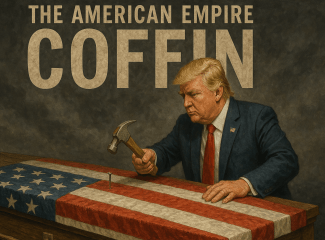

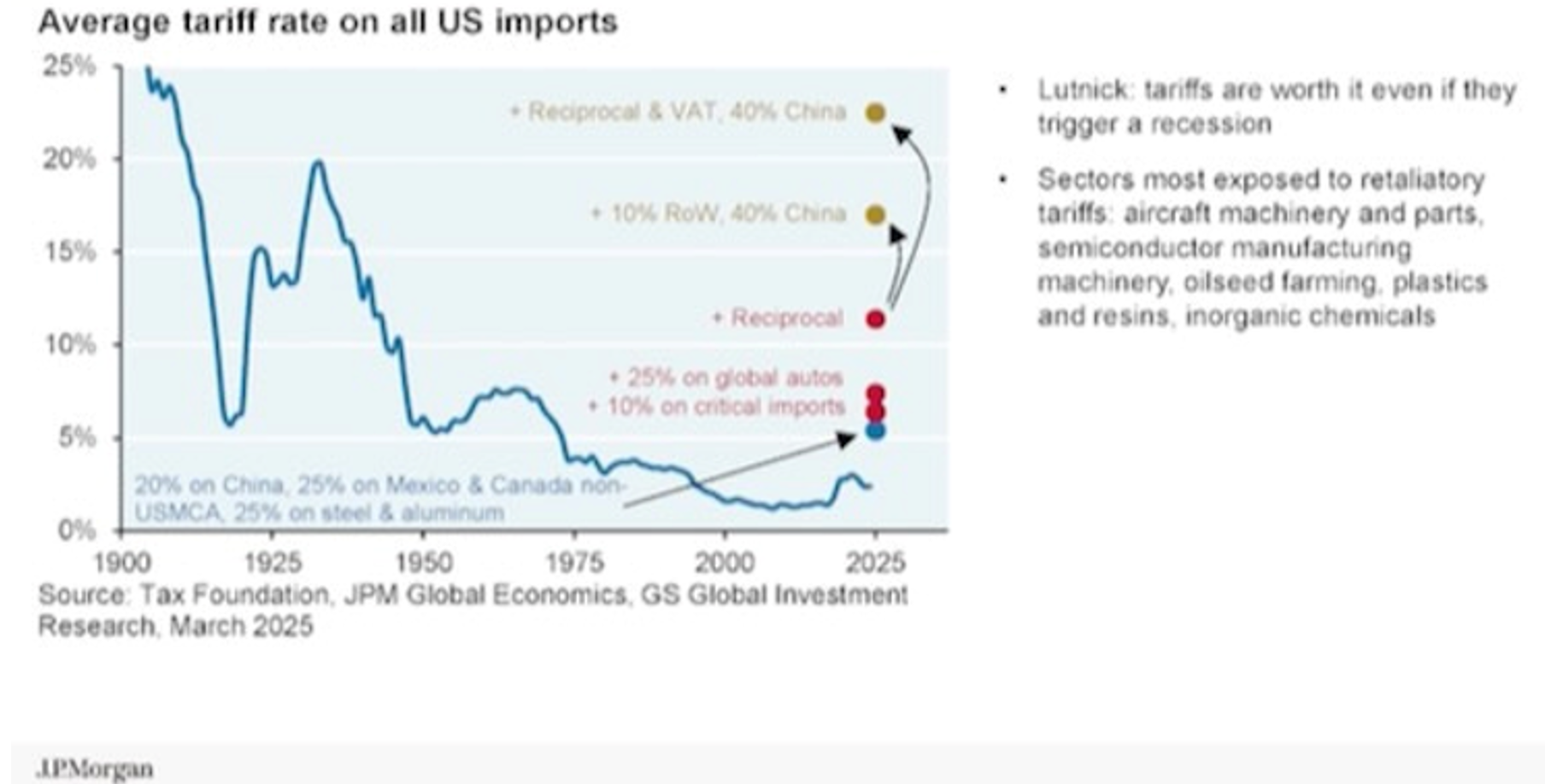
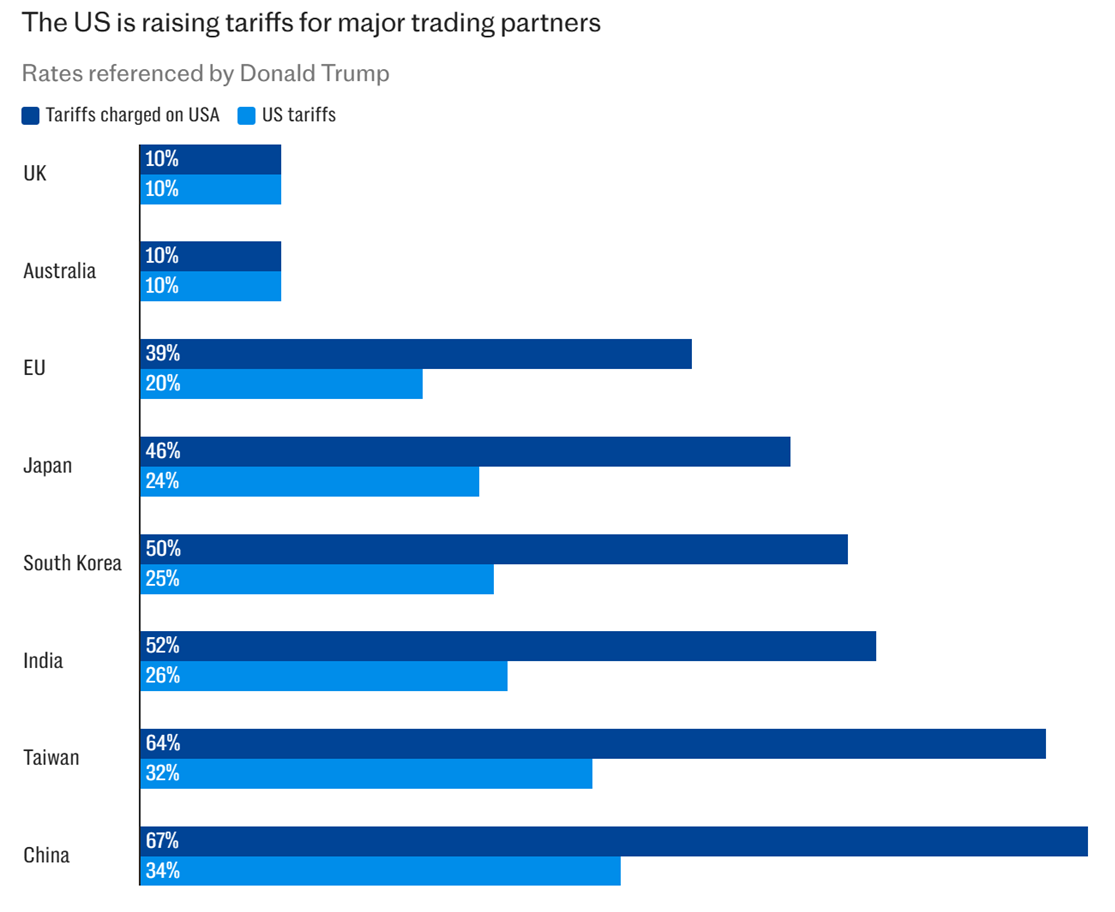
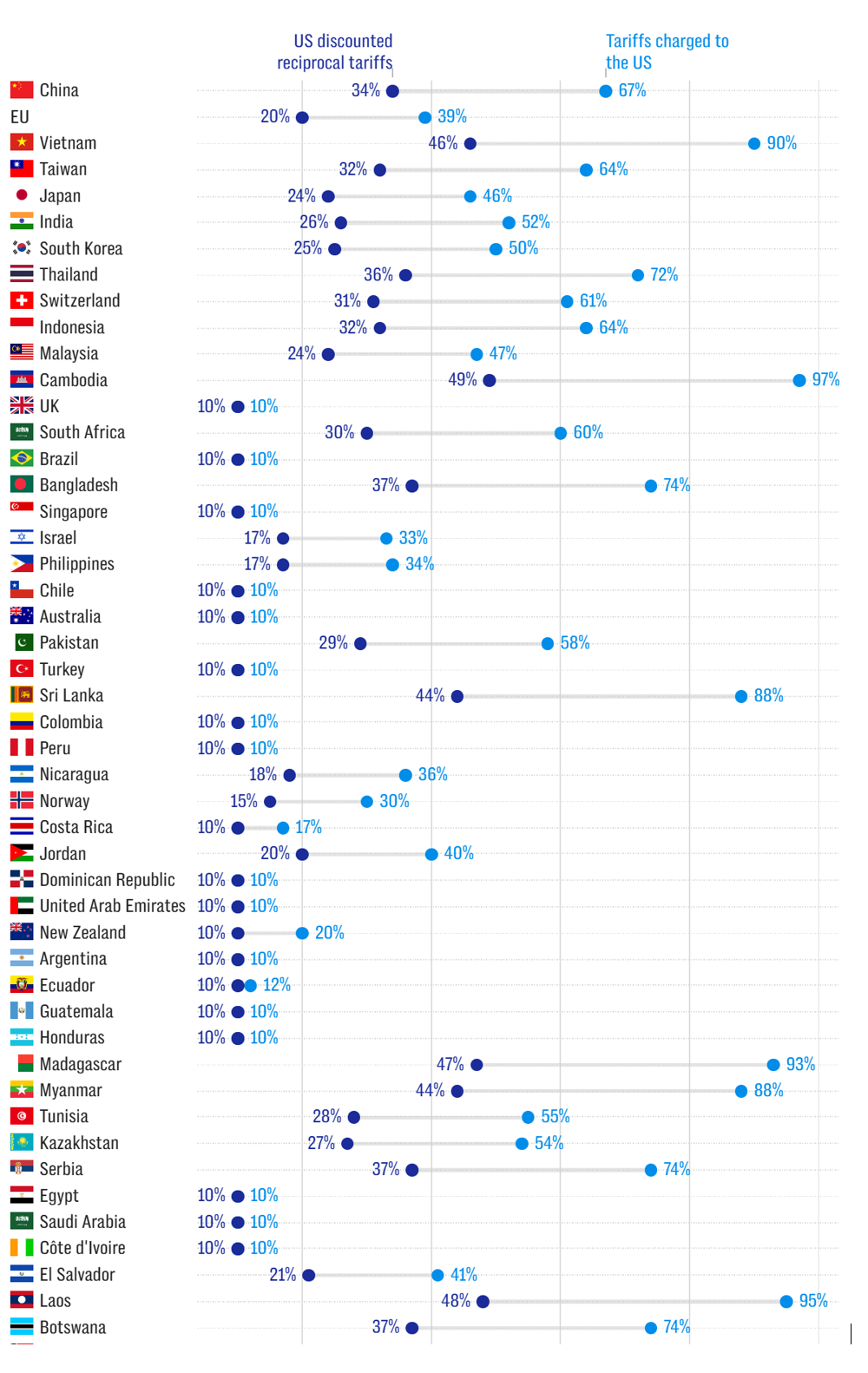
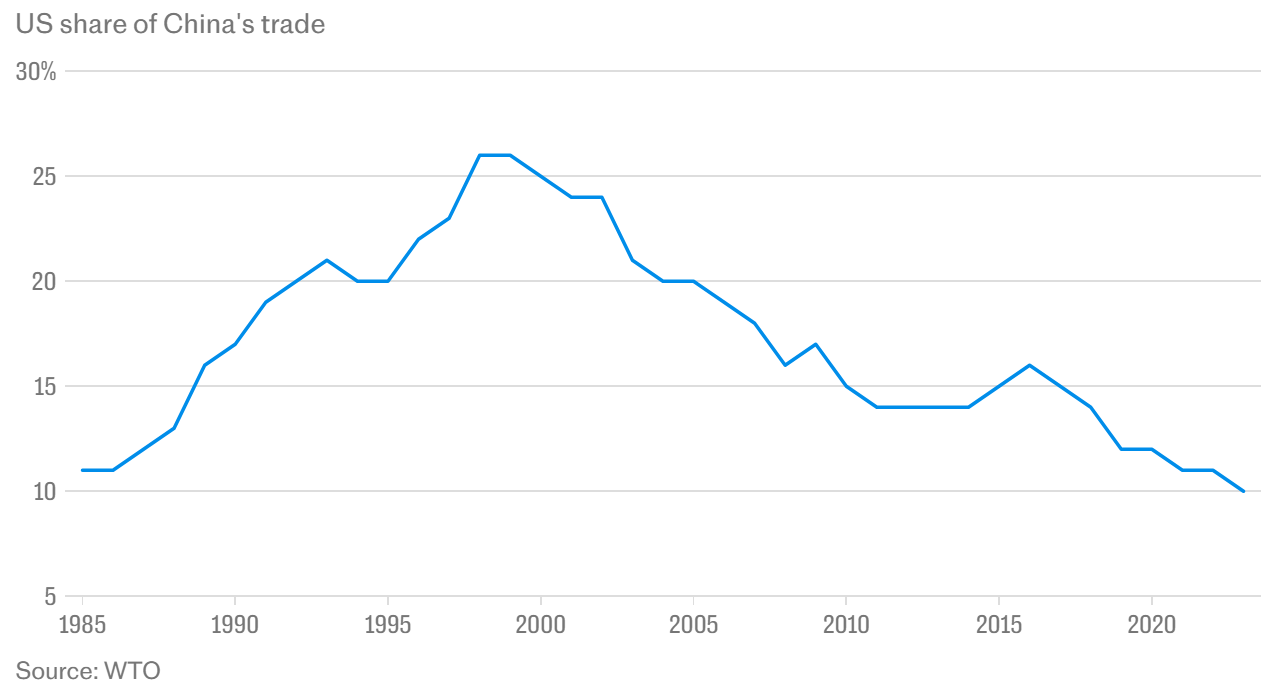
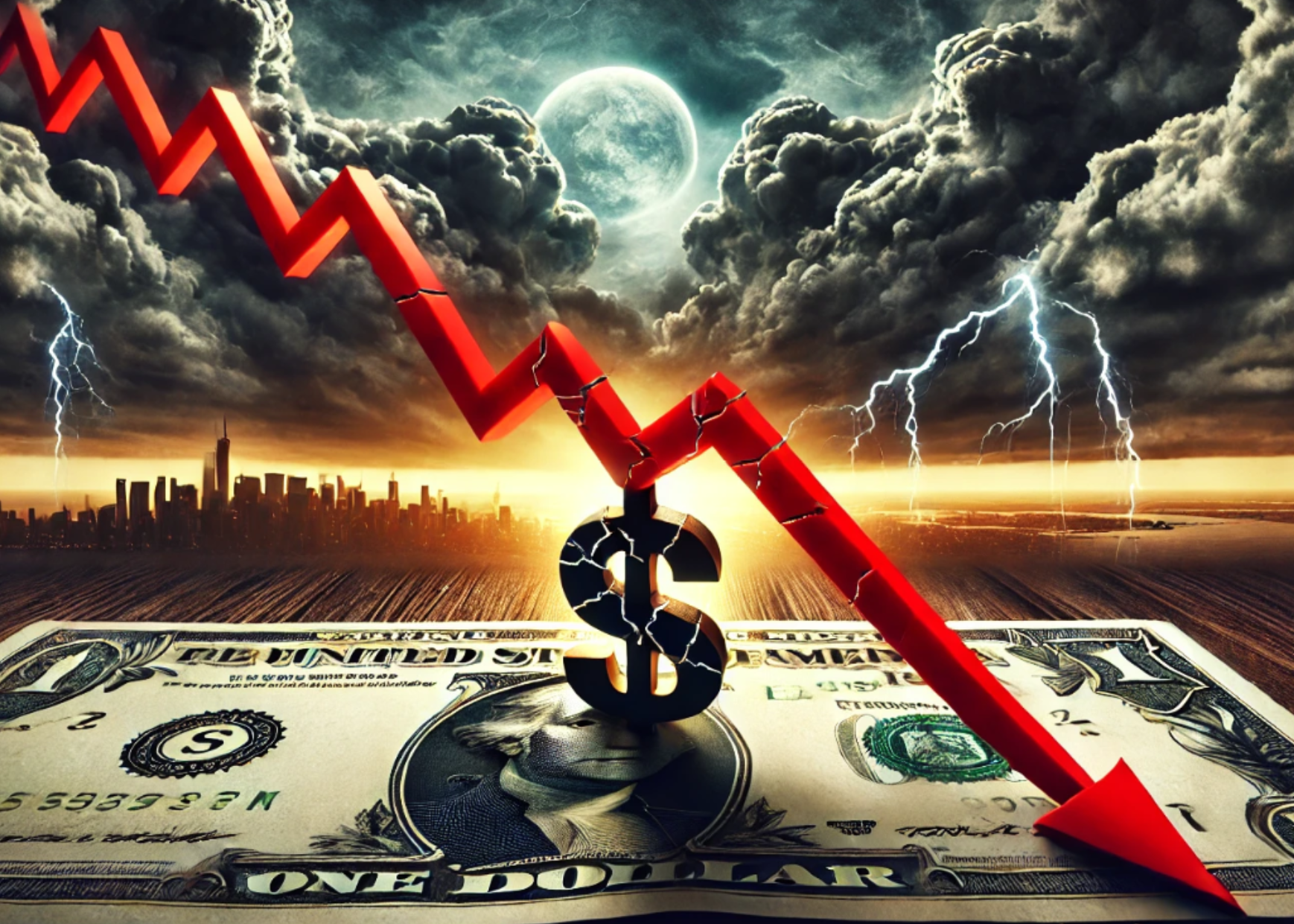
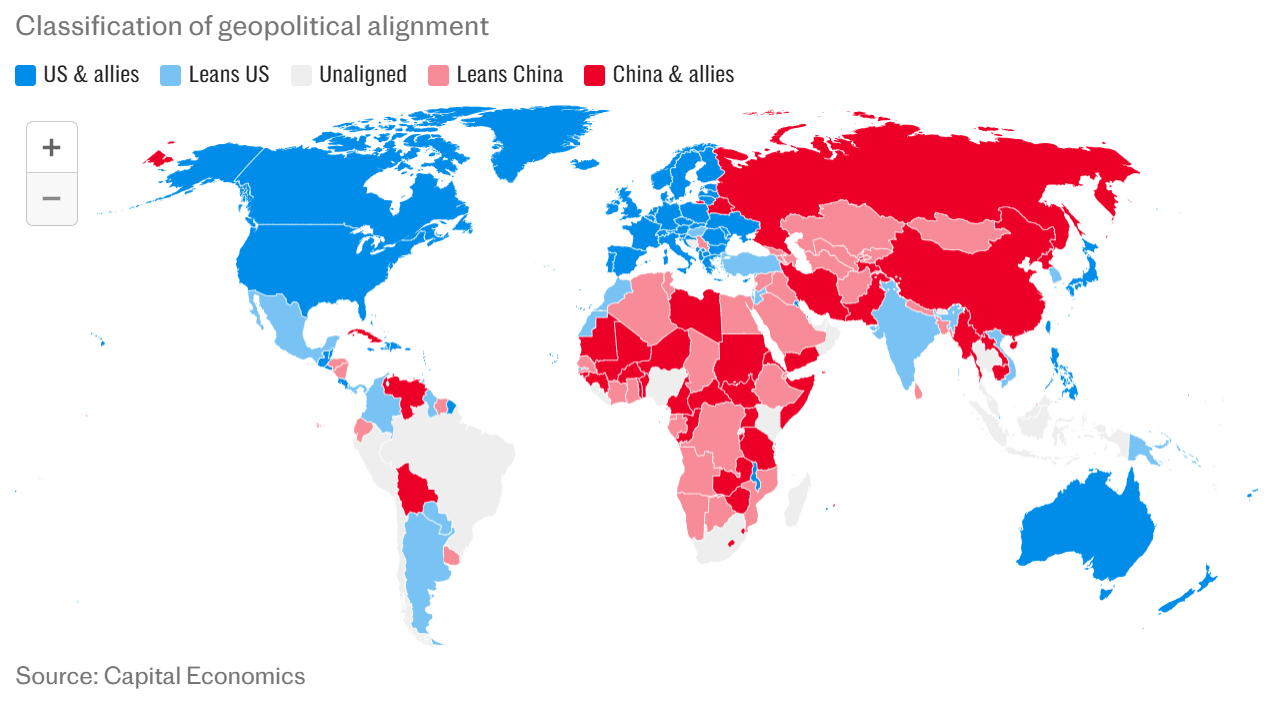

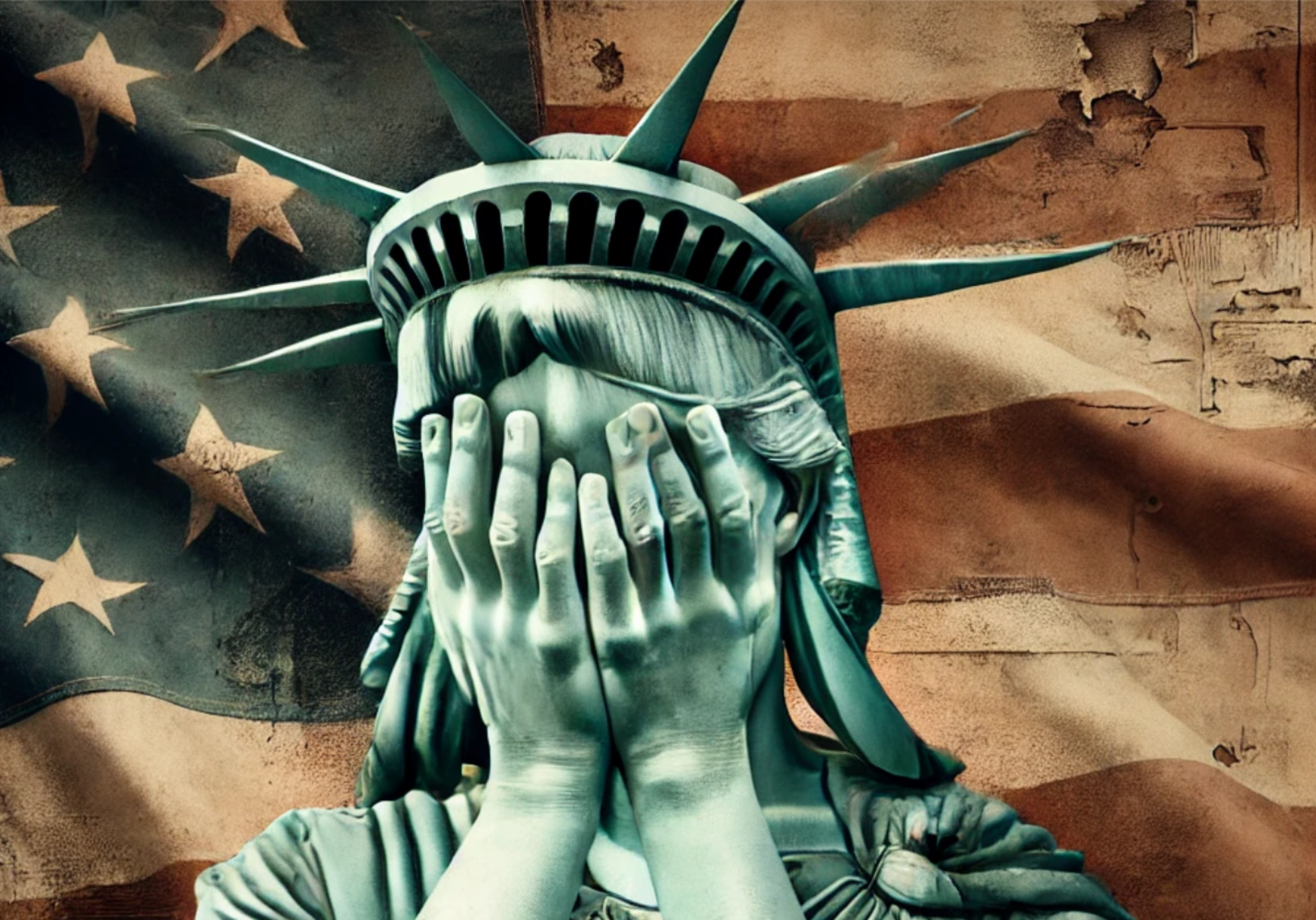
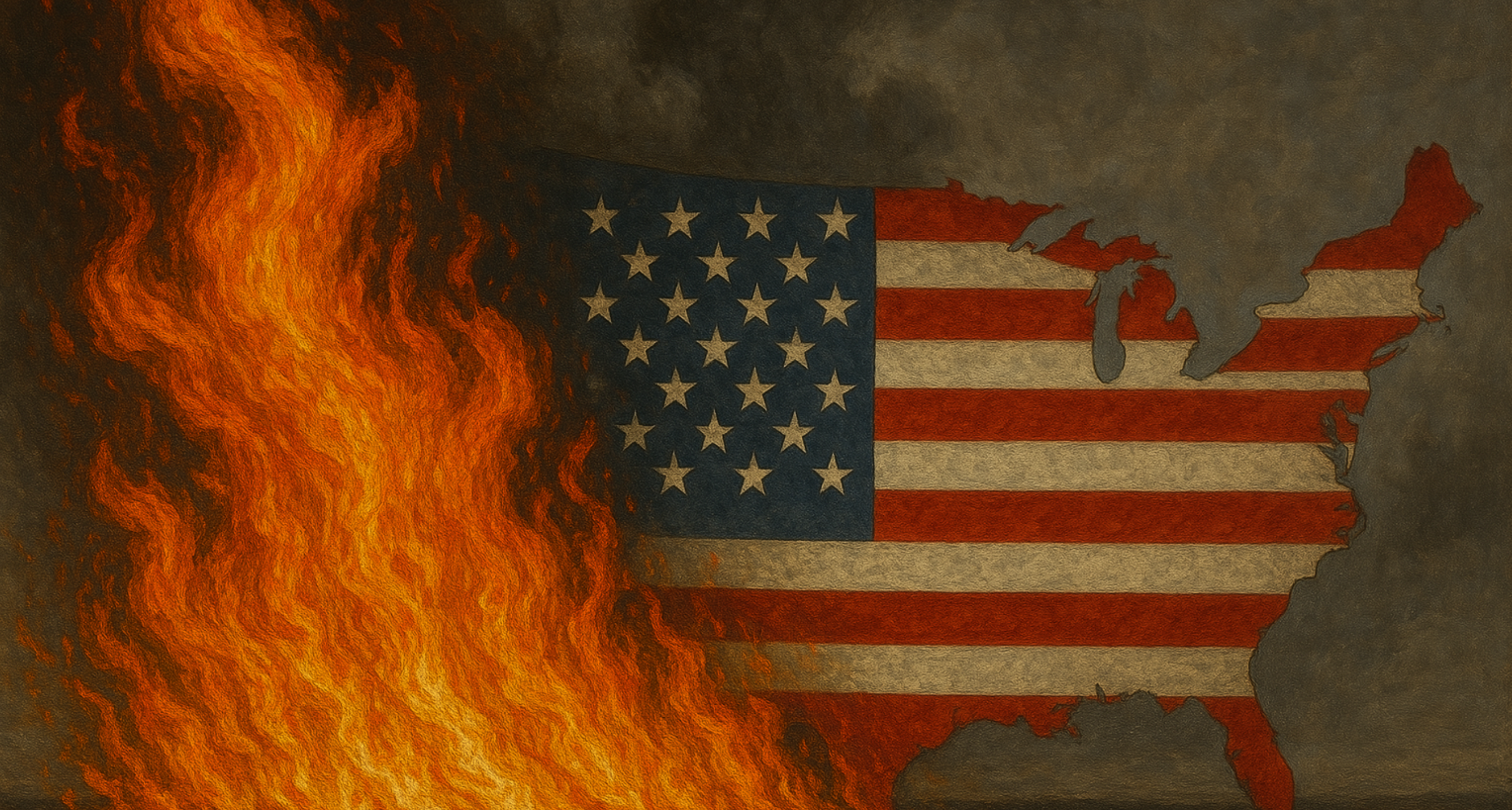







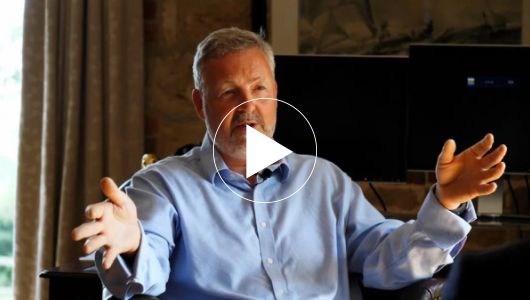



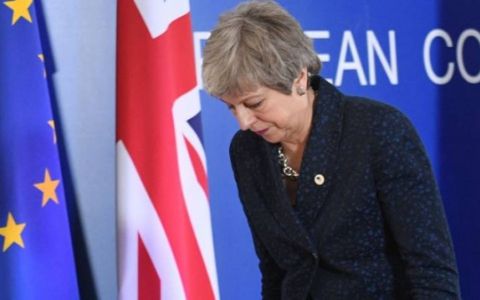
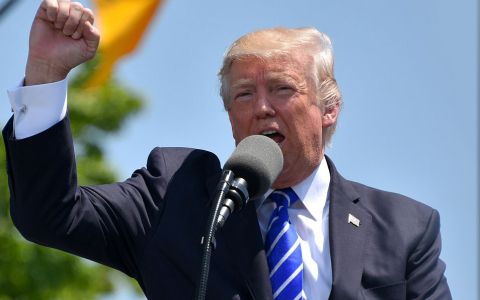










17 April 2025, Trump Will Try To Fire Powell Soon
U.S. Treasury Secretary is defending Federal Reserve Chairman Jerome Powell amid growing pressure from Donald Trump, who wants him removed for not cutting interest rates. Trump, frustrated with Powell's cautious approach, has suggested replacing him with former Fed governor Kevin Warsh. Powell insists the president lacks the authority to fire him before his term ends in 2026 but is watching a related Supreme Court case closely.
Trump’s criticism follows the Fed’s recent reluctance to lower rates because of rising inflation due to tariffs. The European Central Bank, by contrast, has cut rates to 2.25%, citing global economic uncertainty. The IMF also plans to lower global growth forecasts due to trade tensions.
Meanwhile, UK Chancellor Rachel Reeves is in talks with U.S. officials to shield Britain from steep tariffs on steel, aluminiumm, and cars, as hopes for a UK-U.S. trade deal rise. The Fed chairman has long stated he does not believe the president has the power to oust him before his term at the central bank ends in May of next year. But if Trump did it, it would be another nail in the coffin of the market's confidence in Trump. GF, we think Trump will definitely try!
17 April 2025 Rising tensions: US-China relations on the brink of conflict, warns retired U.S. Navy Admiral James Stavridis.
Concerns are mounting that the deteriorating relationship between the United States and China could be a prelude to military confrontation. According to experts, five key indicators suggest that tensions may be approaching a dangerous tipping point. Recent developments — including a full-blown trade war and aggressive cyber activities — have only intensified these fears. The U.S. and China have recently imposed heavy tariffs on one another, marking a shift from rhetoric about a "new Cold War" to open economic confrontation. Experts warn that this trade conflict could become one of the most dangerous precursors to military escalation. Beijing has begun restricting exports of key raw materials, evoking parallels to the lead-up to World War II, when economic sanctions triggered conflict in the Pacific. Meanwhile, China is stepping up cyberattacks on U.S. infrastructure using advanced tools like Volt Typhoon and Salt Typhoon, which have targeted ports, airports, and other critical facilities.“If the scope and impact of these cyberattacks continue to grow, the risk of a broader war rises accordingly,” warns retired U.S. Navy Admiral James Stavridis. What to Watch:
GF-We have been warning that Trump's trade war would precipitate China going kinetic, much as the Japanese did in 1941 in response to America's oil Embargo.
16 April 2025 Trump Plans to Pressure EU Over China Ties in Exchange for Lower Tariffs
Trump is reportedly preparing to pressure the European Union into distancing itself from China in return for reduced U.S. tariffs. According to reports, trade deals with over 70 countries will be contingent on strict conditions related to China. U.S. trade partners will be expected to block imports of low-cost Chinese goods, restrict Chinese firms from operating within their borders, and prevent shipments from China from transiting through their countries. The ultimatum was first reported by The Wall Street Journal. This approach could pose significant challenges for the EU. While the U.S. remains the EU's largest market for exports, China is its biggest supplier and the third-largest destination for key European products such as German cars, industrial machinery, and pharmaceuticals. Carsten Brzeski, Chief Economist at ING, noted: “This is a highly delicate situation. If the EU were to reduce its dependency on China, it would inevitably face pressure on its own exports, as China would likely retaliate.”
Meanwhile,In a sentiment that GF would agree with -China has told the US president to “stop whining” and played victim after “taking a free ride on the globalisation to to train”. The US has lived beyond its means for decades and should drop its “capricious and destructive behaviour”, an editorial in the China Daily newspaper said. The English-language newspaper is widely regarded as a mouthpiece for the Communist Party.
13 April 2025 Trump loyalist Marjorie Taylor Greene bought shares before stock market rebound
Republican Congresswoman Marjorie Taylor Greene is facing calls for an investigation after making timely investments in tech stocks just before a White House announcement paused certain tariffs, sparking a rebound in the stock market. A close ally of former President Donald Trump, Greene reportedly purchased shares in companies including Lululemon, Dell, Apple, Amazon, and the parent company of Restoration Hardware—all of which had been declining.The market rallied shortly afterward when the Trump administration announced a 90-day pause on several “reciprocal tariffs” affecting countries other than China, raising questions about potential insider knowledge or conflicts of interest.
11 April 2025 The Unholy Trinity Build Momentum
The dollar plunged against major global currencies as China retaliated against Donald Trump’s latest escalation in the trade war. The U.S. currency fell as much as 2.1% to a three-year low against the euro, which rose to over $1.14. In what analysts described as a “crisis of confidence” in the dollar, the pound also surged by 1.2% to exceed $1.31.The market turmoil followed an announcement from Beijing’s foreign ministry that it would raise tariffs on U.S. goods from 84% to 125%, effective tomorrow. China signalled that it would not increase duties further, citing a "complete collapse in market acceptance for U.S. exports" to the Chinese market. The move came in response to President Trump’s decision on Thursday to raise tariffs on Chinese imports to 145%. Trump 17 Has Unleashed The Unholy Trinity of American Financial Collapse
10 April 2025 Democrats Call for Investigation into Possible Market Manipulation by Trump Over Tariff Pause
Democrats are calling for an investigation into whether former President Donald Trump engaged in market manipulation after he unexpectedly paused his planned tariff escalation. On Wednesday afternoon, Trump announced a 90-day suspension of his “reciprocal” tariffs on all countries except China. The S&P 500 — which tracks the largest U.S. companies — surged more than 9% following the announcement. “THIS IS A GREAT TIME TO BUY,” Trump wrote on Truth Social at 9:37 a.m. that morning. The timing of the post and the market rally sparked outrage among Democrats, who alleged that Trump may have tipped off his wealthy allies ahead of the announcement, triggering the S&P 500's biggest one-day gain since 2008. Hence, justifiably, there are now justifiably Calls for an ‘Insider Trading’ Investigation
Senator Adam Schiff (D-CA) stated: “I’m writing to the White House to demand answers. Who knew in advance that the president would once again flip-flop on tariffs? Are people in the know cashing in? There’s simply too much opportunity for insider trading within the administration.”Senator Elizabeth Warren (D-MA), a former presidential candidate, added: “Right before Donald Trump announced that some of his tariffs were off again, he sent out a message to his billionaire buddies. Was that market manipulation? Was that corruption in plain sight? We need an independent investigation. ”Warren also pushed for congressional action, urging passage of her bipartisan resolution to limit the president’s ability to impose tariffs unilaterally. Trump declared trade imbalances a national emergency, giving him broad powers to act without congressional approval. Trump explains How His Friends made Billions From His U-Turn
10 April 2025 GF- Analysis of Trump’s Tariff Reversal: Inside the Chaos and the 13-Hour U-Turn
We have always predicted that the one body that could snap Trump back into reality was the market, upon which, in his first term, he depended for validation-On Wednesday, this prediction came to pass and will be a recurrent theme in the future as Equites, bonds and the Dollar all fall in the unholy devil's trinity.
1.0 From Boasting and Bragging Trump basked in the perceived strength of the U.S. economy during a Republican fundraiser on Tuesday night. In full black-tie attire, he boasted, “These countries are calling me up, kissing my ass… they are dying to make a deal.” Mocking a desperate foreign leader, he added, “Please, please, sir, make a deal. I’ll do anything.” According to Trump, other nations had “ripped us off left and right,” but now “it’s our turn to do the ripping… I know what the hell I’m doing.”Just 13 hours later, he made a stunning about-face.
2.0 To U-turn on Wednesday Markets had been in turmoil for days. Equities have been falling at their fastest pace since the global financial crisis. While reports claimed a 50 basis-point surge in 10-year bond yields, this was simply a retracement from the previous week’s rally driven by slowing growth linked to the trade wars. Still, investor anxiety was palpable — and Trump tried to play it cool, urging the public to “be cool!”At the same time, chaos behind the scenes reached a boiling point. A public spat broke out between Elon Musk and Peter Navarro, Trump’s chief trade adviser and an unwavering protectionist. Navarro dismissed Musk as a “car assembler,” prompting Musk to fire back, calling Navarro a “moron.” The clash highlighted the deep divisions within Trump’s administration over the future of the tariff strategy.
Then came two pivotal moments on Wednesday morning. First, Marc Rowan, CEO of Apollo Global Management, sounded the alarm on CNBC. Shortly after, Trump tuned into Fox Business Network, where JPMorgan Chase CEO Jamie Dimon warned that a recession likely resulted from the trade war. “I think probably,” Dimon said when asked about a downturn. This was no coincidence — it was a direct appeal to Trump to step back before triggering a full-blown market panic. Just minutes later, at 9:37 a.m., Trump tweeted: “THIS IS A GREAT TIME TO BUY!!!” A line some would later argue signalled one of the most blatant instances of market manipulation in history. Later that day, Trump announced a 90-day pause on the newly implemented “reciprocal tariffs.” The decision came as equity markets teetered on the brink of another sharp decline and bond investors fled U.S. debt, fearing that the trade war might provoke a global financial crisis.
Trump’s announcement triggered a surge in the S&P 500, but our wave counts suggest this was merely a short squeeze. In the days ahead, we expect the market to resume its decline. After all, the underlying madness of Trump’s trade strategy remains firmly in place, and the U.S. is still locked in a full-scale trade war with its biggest economic rival, who will no doubt start to sell US bonds in revenge!
3.0 The Trump Climbdown Trump framed the move as strategic, saying people were “getting a little bit afraid.” The markets roared back, with Wall Street posting its biggest one-day gain since 2001. Trump declared that “there will be fair deals for everybody.”The pause applied to 75 non-retaliating countries but not China. In fact, tariffs on Chinese imports were simultaneously raised from 104% to 125%. The U.S. and China are now in a tense standoff, effectively blocking each other’s goods.
4.0 Flawed Trade Logic: While the pause brought temporary relief, many damaging tariffs remain. Few believe Trump is backing away from protectionism. He has championed tariffs for decades and is deeply committed to reshaping the global trade landscape. China is clearly his primary target, and this pause may be less of a retreat and more of a recalibration. Yet the logic underpinning Trump’s “reciprocal tariffs” is questionable at best. They are not based on actual trade barriers placed on U.S. products but rather on the U.S. trade deficit as a percentage of exports — an arbitrary and economically flawed metric. Ironically, the market meltdown may help Trump, at least on paper. From a macroeconomic perspective, a trade deficit is the inverse of capital inflows. The trade deficit shrinks if U.S. markets become less attractive and capital inflows slow. Trump might see that as a win — albeit unintentionally. Given the Trump team’s limited grasp of financial nuance and their resistance to understanding long-term consequences, one can only imagine how disastrous things might have become had the pause not been enacted.
5.0 Trump Has Zero Understanding of How to Use a Trade War Strategically the U.S. government has attempted to justify its recent tariff blitz by referencing economic research — most notably a policy note accompanying last week’s announcement that cited Trade Wars with Trade Deficits, co-authored by economist Josep Pujolàs and Jack Rossbach of Georgetown University in Qatar. The paper, published last year, explores the theoretical possibility that the U.S. could "win" a trade war against China under specific conditions. However, Pujolàs has strongly rejected the way his research has been interpreted and applied by the Trump administration, emphasising that the economic models in his paper and those used to justify the current policy are “worlds apart.” He expressed deep regret that his work had been co-opted to support the tariffs.“When the Wright Brothers invented the aeroplane, they didn’t think it would be used in 9/11,” he said. “If they had been alive, they would have been horrified.”He further clarified that the tariffs discussed in his research were nowhere near the scale now being imposed: “The tariffs we analyse are very, very far from the 104% recently placed on Chinese goods.”Pujolàs didn’t mince words in his criticism of Trump’s approach: “These tariffs are nonsense and will cause a worldwide recession. If I’m sure of anything right now, we’re heading into a global downturn.”
9 April 2025 Putin has escaped Trump’s tariffs, but his war machine is in for a world of pain
While Putin appeared to escape unscathed during Donald Trump’s tariff blitz last week, a more serious threat to Russia has emerged: plummeting oil prices, as markets brace for a global, tariff-induced economic slowdown.This slide in crude prices is expected to cost the Kremlin tens of billions in lost revenue — directly undermining the financial engine behind Putin’s war machine. Oil prices are now down nearly 15% since the start of the year, marking their lowest levels since August 2021.
Moscow is bracing for significant economic pain. The falling ruble, rising inflation, and growing pressure on the central bank to hike interest rates further are all converging at a critical moment.The loss in oil revenues is particularly damaging. Oil production in Russia costs between $15 and $20 per barrel, so while operations remain technically profitable, margins are being sharply squeezed.
In February alone, Russian oil exports were valued at $13.3 billion — accounting for 42.5% of the country’s total export revenue. That cash flow is essential to maintaining the Kremlin’s fiscal balance and funding its military ambitions.To make matters worse, the Russian economy is already under strain. Inflation surged past 10% in February, hitting a two-year high, despite the central bank raising interest rates to a record 21% last year. In short, Trump’s trade war may have missed Putin directly — but its indirect consequences could deliver a serious blow to Russia’s economic and geopolitical stability.
9 April 2025 MAGA: A Divided Tribe
MAGA represents a diverse and unlikely coalition, united by their support for Donald Trump and his vision of American greatness. His base includes blue-collar workers, redneck hillbillies, Gen Z men, conservatives, Latinos and Hispanics, black voters, disillusioned female Democrats, evangelicals, Catholics, and, in more extreme corners, those who chant “Russia is our friend” and wave the swastika flag.Trump has managed to keep this fractured coalition together through a combination of charisma, boosterism, interest-group politics, and a ruthless intolerance for dissent. The cult-like fervor of his movement has also played a significant role in maintaining unity. However, this week, the pressure from Trump’s aggressive tariff strategy has caused the most significant rift among his supporters to date.
Musk, a leading figure among Trump’s libertarian supporters, has been advocating for a softening of the president’s tariffs, warning of the economic and geopolitical chaos they could trigger. His calls for a more free-market approach have not been well-received by the protectionists within Trump’s base.Musk has specifically called for the removal of tariffs between the U.S. and Europe, which are currently at 20%. In a somber interview posted on X, he was clear about his position. “At the end of the day, I hope it’s agreed that both Europe and the United States should ideally move to a zero-tariff situation, effectively creating a free trade zone between Europe and North America,” Musk said.
In response, Peter Navarro, Trump’s trade dogey Tariff advisor, publicly dismissed Musk’s proposal. “Elon Musk sells cars,” he quipped. “He’s simply protecting his own interests, as any business person would do.” Navarro then accused Musk of leading a “car assembler” rather than a true manufacturer, who, he claimed, uses “cheap foreign parts,” which “doesn’t work for America.”
8 April 2025 Trump imposed Further 104pc tariffs on China.
The tit-for-tat tariff hikes follow China's decision to retaliate against Donald Trump's "reciprocal" tariffs, which the president announced last week. China's commerce ministry has called the move “a mistake on top of a mistake.” White House press secretary Karoline Leavitt responded, stating, “Countries like China, who have chosen to retaliate and double down on their mistreatment of American workers, are making a mistake. President Trump has a spine of steel that will not break, and America will not break under his leadership.”
8 April 2025 Musk brands Trump’s tariff guru ‘dumber than a sack of bricks’
Musk has labeled trade advisor Peter Navarro as “dumber than a sack of bricks” and exposed a growing divide within the White House over tariffs.In a rant on his social media platform X, Musk called Navarro, the US president’s senior counselor for trade, “truly a moron.” The outburst followed Navarro’s remark that Musk was merely a “car assembler” rather than a manufacturer.Musk rejected Navarro’s claim that he relied on “cheap foreign parts,” calling it “demonstrably false” and asserting that Tesla “has the most American-made cars.”The feud underscores increasing tensions within Trump’s inner circle, tensions that have become more pronounced following the president’s global tariff policies, which triggered stock market crashes around the world.
8 April 2025 Trump's Trade War is About Control and Will Only Escalate
Trump’s trade wars were never about protecting American workers or reviving struggling industries—they are a display of raw power. This unfolding war is driven not by strategy but by Trump's spite, serving more as a tool to intimidate allies, provoke adversaries, and bend global markets to his will than to secure fairer trade deals.
Trump made no secret of his intentions. From the outset, he campaigned on chaos, promising to upend institutions, punish enemies, and assert himself as a strongman. He admired authoritarian rulers, relished the idea of unchecked authority, and consistently prioritised personal loyalty over democratic principles or economic stability. His disregard for truth and democratic norms was never hidden, yet over 77 million Americans still voted for him. His promises—to lower prices, cut taxes, and end wars—were hollow from the start. What he truly sought was control, not prosperity. He didn’t want to lead America; he wanted America to obey.
This pursuit of control is playing out once again in Trump’s latest escalation of his trade war with China. After Beijing imposed 34% tariffs on U.S. goods, Trump threatened to retaliate with tariffs that could exceed 100%, pushing total tariff rates on Chinese imports as high as 115%. These Trump threats come despite already damaging economic fallout, including ballooning trade deficits and rising costs for American consumers.
Investment bank Citi previously estimated that Trump’s tariff measures—spanning both his terms—could drive effective tariff rates on Chinese goods to around 65%. Now, Trump’s aggressive rhetoric signals a move to double that figure. On his Truth Social platform, he warned that if China does not withdraw its new tariffs, the U.S. will impose additional 50% tariffs, on top of those already in place. The market has responded with panic. The S&P 500 has plunged more than 20% from its December peak, officially entering bear market territory after losing more than 13.5% since Trump’s announcement of his “Liberation Day” tariffs. A staggering $9.5 trillion has been wiped from global stock markets, according to Bloomberg. Despite the economic carnage, Trump continues to urge Americans to “be strong, courageous, and patient,” promising that “greatness will be the result.” But the reality is clear: these trade wars, launched without foresight and sustained through belligerence, have left economic destruction in their wake—and the world is once again paying the price.
What is certain is that this trade war will only escalate in terms of the magnitude of the tariffs and the next step into a kinetic war with China.
7 April 2025 China Retaliates with a seven-element Rare Earth Moratorium on Trump
Two days after U.S. President Donald Trump announced a 34% tariff on Chinese products, Beijing retaliated with new controls on critical mineral exports, targeting the American defense-industrial base while also matching levies on U.S. imports. Effective immediately, China will require special licenses to export seven medium and heavy rare-earth elements to the U.S.: dysprosium, gadolinium, lutetium, samarium, scandium, terbium, and yttrium. China’s Ministry of Commerce stated that the export curbs were imposed “to better safeguard national security and interests and to fulfil international obligations such as non-proliferation.”
Beijing’s selection of minerals was calculated carefully. The U.S. is highly dependent on China for these metals and lacks the ability to produce them at scale domestically, even in cases where significant domestic deposits exist. “This is a precision strike by China against Pentagon supply chains that support our most powerful weapons and defence systems,” said Mark Smith, CEO of NioCorp, a company developing a critical minerals project in Nebraska.
At the same time, Beijing is applying direct pressure on the defence sector’s permanent magnet supply chain. Terbium, for example, enhances the temperature resilience of neodymium iron boron magnets. These magnets have crucial defence applications, including in missile guidance and control systems, satellite communications, and radar systems. Lockheed Martin’s F-35 Lightning II, General Atomics’ Predator drones, and RTX’s Tomahawk missiles all use rare-earth magnets. The magnets are also essential components of Virginia- and Columbia-class submarines.
China produces nearly 100% of the world’s dysprosium, which is used to improve the properties of neodymium magnets, making them resistant to demagnetisation at high temperatures. Dysprosium’s heat resistance also makes it vital for advanced semiconductors. By curbing exports of gadolinium to the U.S., China disrupts the aircraft engine supply chain. Gadolinium is used to enhance the mechanical properties of alloys in turbine blades and other engine components.
06 April 2025 UK risks Greek-style debt crisis from Trump tariffs
Investors have cautioned that Britain and many other Western nations (including America) risk being dragged into a debt crisis reminiscent of Greece's financial meltdown a decade ago, as Trump’s trade war threatens to weaken the global economy.
With the UK economy already fragile and the Treasury operating with minimal fiscal headroom, experts warn that Britain is vulnerable to a “negative spiral” similar to the one that gripped the eurozone in the early 2010s. At that time, bond markets turned sharply against Greece when investors lost confidence in its ability to balance the books.One investor explained: “The problem with high debt levels is that it’s manageable—as long as your nominal economic growth exceeds your interest costs. But if nominal GDP growth stalls, even slightly and not just temporarily, below the level of interest payments, you quickly enter a dangerous downward spiral. That’s exactly what happened to Greece during the global financial crisis.”
5 April 2025 -Chinese Innovation Power is Underestimated By Trump
Huawei’s Lianqiu Lake R&D campus, completed in just over three years, is a state-of-the-art facility featuring 104 buildings, 100 cafes, fitness centres, and a monorail designed to attract top talent. This campus is Huawei’s response to the U.S. tech export restrictions that began in 2019, which severely impacted the company. Despite the sanctions, Huawei has continued to innovate, introducing the advanced "Mate 60" smartphone, a triple-folding phone, and the Hongmeng operating system, all made possible by domestic semiconductor production. Huawei has also expanded into AI technology for electric vehicles and autonomous systems, including charging stations across China.
While the U.S. focuses on domestic issues, China is advancing rapidly in AI and manufacturing. Huawei’s impressive comeback in 2024, with a significant rise in profits thanks to homegrown chips, highlights this shift. The U.S. must reconsider its assumptions about China’s technological capabilities, as the country’s ongoing advancements show that China is no longer reliant on U.S. technology. This is a wake-up call to U.S. lawmakers, who need to update their understanding of China’s growing innovation and its economic impact. The narrative that the U.S. can outpace China is increasingly misguided, and tariffs will only exacerbate long-term inflation, not solve the issue.
06 April 2025 Central Banks Forced to Act Early as US Trade War Threatens Global Growth
The consequences of the president’s trade war are becoming increasingly clear. Rattled economists are slashing growth forecasts and raising the likelihood of a global recession. The timing couldn’t be worse—especially for heavily indebted governments—just as calls grow for increased public spending on benefits, healthcare, and defence. In response, central banks are being forced to play their hands early. The Bank of England’s Monetary Policy Committee (MPC) is expected to cut rates to stimulate growth, despite the risk that tariffs could reignite inflationary pressures. “They may return to the kind of approach we saw during the pandemic,” one analyst noted. “When demand looks weak, you ease monetary policy.” At this stage, policymakers appear more focused on keeping their economies afloat than fighting rising prices. Now, central banks must step in to support struggling economies. History shows that the Federal Reserve tends to cut rates aggressively during downturns—and markets are betting it will do so again.In the eurozone, markets are already pricing in three rate cuts between now and September. The European Central Bank’s (ECB) next move, expected in two weeks, will likely bring the key rate down to 2.25%, with a further reduction to 1.75% anticipated by autumn.Goldman Sachs has warned that there is a one-in-three chance rates could fall even further, depending on how quickly the economic outlook deteriorates.
GF – While central banks will undoubtedly lower rates to compensate for the decline in growth triggered by Trump’s economic madness, the next stage of this entropic story is far more dangerous: an imminent U.S. and Israeli strike on Iran’s nuclear facilities. Such an event would send oil prices soaring, ushering in a stagflationary environment—the worst of all economic outcomes. In this scenario, Trump will have not only weakened the U.S. economy but also that of its allies, precisely at the moment they face mounting pressure from Chinese and Russian aggression. His policies are nothing short of national suicide.
Not below that, Russia received zero sanctions! Hardly a good message, even though America imports nothing from Putin's empire!
5 April 2025 China’s tit-for-tat with Trump on tariffs raises fears of a fully blown all out trade war
As global stock markets continued their falls on Friday. The Nasdaq Composite has fallen more than 20% from its December highs, officially entering what investors refer to as a “bear market.”As anyone familiar with past trade wars could have predicted (Trump excluded!), China retaliated swiftly against the new U.S. tariffs announced on Friday, escalating fears of a broader global trade war. Beijing slammed the move as “unilateral bullying” and responded by raising tariffs on all U.S. imports by 34 percentage points—mirroring the tariffs Trump imposed on China just two days earlier. In response, Trump lashed out, accusing China of having “panicked” and “played it wrong” with its decision to slap 34% tariffs on all American goods starting next Thursday. He doubled down on his stance, calling the Chinese reaction a misstep. Amid the growing tension, Trump found solace in a better-than-expected jobs report showing U.S. employers added 228,000 jobs in March. “GREAT JOB NUMBERS, FAR BETTER THAN EXPECTED. IT’S ALREADY WORKING. HANG TOUGH, WE CAN’T LOSE!!!” he posted. Adding to his delusional worldview, Trump also claimed that Labour leader Keir Starmer was “very happy” with how Britain was being treated in the tariff dispute. But honestly—in what world is anyone happy with Trump's trade war?
3 April 2025 Trump’s Delusion
is clear after the dollar and Stock markets fell precipitously following his global tariffs. Indeed, Trump has overseen the worst 10-week start to a presidency in terms of stock market performance since George Bush during the 2001 dot-com crisis. The market turmoil extended from Tokyo to London as outraged American trade partners vowed to retaliate. Despite the downturn, Trump remained optimistic, telling reporters at the White House, “I think it’s going very well. The markets are going to boom. The country is going to boom.” Meanwhile, JD Vance, speaking on Fox News, dismissed concerns, insisting there was nothing but “enthusiasm” for Trump’s aggressive trade policies.
3 April 2025 Trump tariffs and Liberation Day is about ideology, not the US economy. Trump’s tariffs are the sign of a nation in decline, not becoming great again?!
3 April 2025 British Columnist Blasts Trump’s Tariff Plan as Economic Self-Destruction
British columnist Ian Dunt has condemned Donald Trump’s latest tariff announcement, calling it a disastrous move that epitomises the decline of an empire. Writing for iNews, Dunt expressed shock at the economic damage Trump is inflicting on his own country.Dunt was particularly appalled by a chart Trump presented, which allegedly contained wildly inaccurate figures about foreign tariffs on American goods. He described the data as "pure gibberish," likening its logic to dividing apples by bagels to calculate a mortgage rate. Criticising Trump’s approach as intellectually and economically indefensible, Dunt argued that the policy lacked rational thought and was "the single stupidest thing" he had ever seen. He compared Trump’s presentation style to a "cheap knock-off daytime TV host," suggesting that his tariff plan was more spectacle than strategy.Dunt's critique highlights broader concerns that Trump's trade policies could lead to economic turmoil, reinforcing fears of mismanagement and decline.